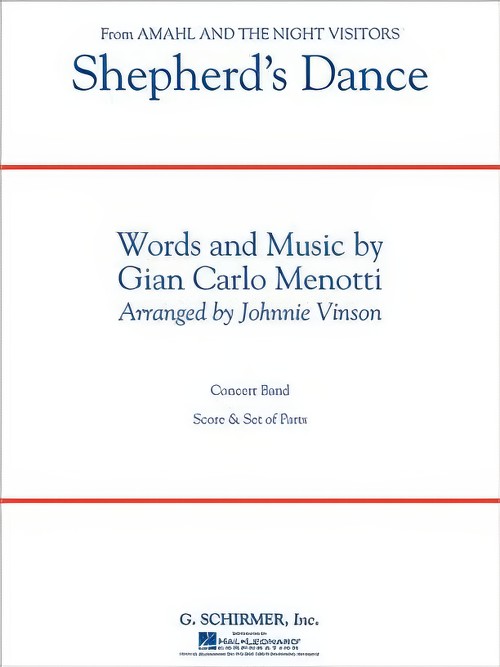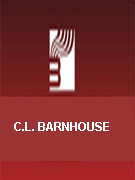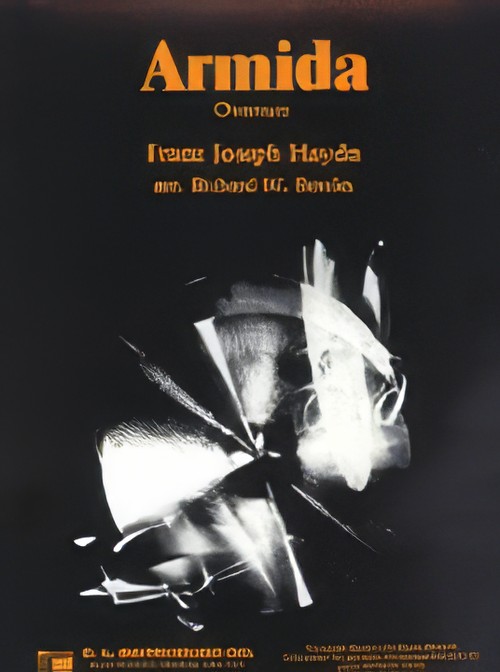Results
-
 £64.99
£64.99Shepherd's Dance (Concert Band - Score and Parts)
Amahl and the Night Visitors was the first opera to be commissioned especially for television. Having its premiere in 1951, it has since become a holiday classic with an enduring story and unforgettable music. This setting of "Shepherd's Dance" presents the charm and character of the original in an exceptional adaptation for concert band. (Grade 3) (3:00) 03:00
Estimated dispatch 7-14 working days
-
 £74.99
£74.99Song for Peace Wind Band Set (Score & Parts)
Song for Peace (also known as The Nun's Chorus) is from Johan Strauss Jr. much neglected opera Casanova. It has been arranged for beginner bands and can be played with a minimum of four players (+ percussion). It stately melody will bring a little regalness to any concert. 0:03:00
Estimated dispatch 7-14 working days
-
 £94.30
£94.30TANCREDI (Intermediate Concert Band) - Woodfield, Ray
Overture to the Opera. Grade: Medium.
Estimated dispatch 7-14 working days
-
 £137.99
£137.99The Gipsy Baron Wind Band Set (Score & Parts)
The operetta The Gipsy Baron is, together with Die Fledermaus (The Bat), the most famous theatre work by Johann Strauss Jr. A libretto full of romance, original musical ideas, compelling Viennese dances, fiery rhythmic Hungarian music and beautiful arias, were just some of the ingredients that lead to its huge success. The Gipsy Baron can also be thought of as a comic opera. The main motif of this overture won first prize in a contest that was to provide a new Hungarian anthem, however because Strauss did not have Hungarian nationality, another melody was chosen. A great transcription to bring a Hungarian twist to any programme. 0:08:15
Estimated dispatch 7-14 working days
-
 £44.55
£44.55Those Daring, Dueling Drummers (Concert Band - Score and Parts)
Here's a delightful combination of opera's greatest hits that proves that opera can indeed be fun. Your audience will love it! Features themes from Puccini, Verdi, Wagner, and Leoncavallo.
Estimated dispatch 7-14 working days
-
£104.99
Triumphal March (Concert Band - Score and Parts)
The Gran Finale from the second act of Verdi's famous opera Aida, composed in 1869, is a complex part of the drama as in one single scene many different characters, allwith contrasting emotions, appear onstage at the same time. The scene opens in Ancient Egypt when the Egyptian general Radames and his troops, which have just beaten Ethiopia, come marching in. The Egyptians sing a celebration song for him and there is a sound of trumpets playing the triumphal march to receive the hero. The well-known triumphal march, transcribed in this edition for concert band by Franco Cesarini, closely follows Verdi's original score and will bring any concert to a dramatic close. 05:30
Estimated dispatch 7-14 working days
-
 £78.00
£78.00Armida Overture (Concert Band - Score and Parts) - Haydn, Joseph - Bowles, Richard W.
This overture to the opera is characteristic of Haydn. It is an abbreviated sonata form with a waltz instead of a development section. The melodies have real vitality, and ingenious counterpoint enriches the repetition of thematic material.Duration: 6.00
Estimated dispatch 7-14 working days
-
 £225.99
£225.99Los Libros Olvidados - Johan de Meij
1. Barcelona 19452. Los Libros Olvidados - El Cementerio3. Las Ramblas - Els Quatre Gats4. Coubert - El Hombre sin Rostro5. Bea (Beatriz)6. El Inspector Fumero7. La Ciudad de las SombrasThis is a story wrapped within a story that unfolds in Barcelona 1945, following World War II. The protagonist, Daniel Sempere, is the teenage son of an antiquarian book dealer, who one day takes him to the Cemetery of Forgotten Books, a mysterious place with labyrinthine corridors where rare and banned books are stacked in massive dusty piles. His father tells Daniel to select a book, but it will be his responsibility to protect it. Daniel picks La Sombra del Viento (The Shadow of the Wind), a novel by a forgotten author Julin Carax. Daniel immediately starts reading the book, and the story unwinds itself into a compelling and complicated plot. As he reads, Daniel finds himself and his own life merging into the story's plot. It transpires that there is a mysterious man named Lan Coubert ('the man without a face') who is determined to destroy all copies of Carax's books. Daniel is threatened by Coubert and is determined to find out what happened to Carax, who fled to Paris and subsequently disappeared. Daniel finds that his own life has much in common with the author's. The book mixes magic realism, page-turning mystery, and Daniel's own real life. Daniel's once ordinary teenage existence is now filled with larger-than-life colorful and at times, terrifying characters. Among them are Fermn Romero de Torres, a beggar who Daniel and his father befriend and employ in the family bookstore; the evil police inspector Javier Fumero, who could be compared to Scarpia in Puccini's opera Tosca or Javert in Les Misrables. The corrupt Fumero uses the war as an excuse to practice his sadism and is widely feared in Barcelona. He is represented in the music by a fascist military march. The city of Barcelona becomes a character in the book and in the music. The Ramblas, the boulevard running through Barcelona's Gothic Quarter and the famous caf Els Quatre Gats (the four cats) come alive in the score through a Cobla, the traditional wind ensemble playing a sardana, typical Catalan folk music. Two parallel love stories turn up the heat: Julin Carax's passionate, forbidden love for Penlope, and Daniel's equally passionate and forbidden love for Beatriz (Bea). Bea's sultry love theme is based on the first three letters of her name, with the ascending intervals B-E-A. Johan de Meij New York, October 17th, 2023
Estimated dispatch 7-14 working days
-
 £194.99
£194.99The Year 1941 - Serge Prokofieff
The Year 1941 was composed during the second World War. Prokofiev, along with other composers, was evacuated to the Caucasus when Germany started attacking the Soviet Union in 1941. It was under such circumstances that Prokofiev began work on this symphonic suite. He was working on his epic opera War and Peace and the String Quartet No. 2 at the same time. It is an orchestral suite in three movements, a poignant and evocative musical depiction of a tumultuous period in history. The composer described these three movements as follows: I. In Battle - "a scene of heated battle, heard by the audience sometimes as though far away and sometimes as though on the actual battlefield."II. At Night - "a poetic night scene, disturbed by the tension of impending conflict. III. For the Brotherhood of Man - "a triumphant lyrical hymn to victory and the brotherhood of peoples."
Estimated dispatch 7-14 working days
-
 £236.00
£236.00Pome symphonique en forme d'ouverture - Paul Gilson
In September 1925, on the occasion of the sixty-fifth birthday of their 'master', seven students of Paul Gilson gathered to form the first composers' collective in Belgian national music history. The members of Les Synthtistes (the Synthetists) are Ren Bernier, Francis de Bourguignon, Gaston Brenta, Tho Dejoncker, Marcel Poot, Maurice Schoemaker and Jules Strens. Their intent is twofold and both theoretical and practical. Les Synthtistes want to distinguish themselves as the 'Brussels seven' by breaking away from the prevailing late-romantic music of their time. Their theoretical aim is to synthesize the modern tendencies in music from 1925 onwards, to connect with the 'acquisitions of contemporary music' and to apply them within balanced and well-defined forms. Their practical goal is to make it easier to find a stage to perform their new symphonic music by uniting. In a period when there is no professional symphonic orchestra in Belgium, apart from the opera orchestra, they compose and transcribe their original symphonic works for wind band. They work together with Arthur Prevost and the Royal Band of the Belgian Guides which grew into a model instrumentation of 85 musicians during the interwar period. Thanks to Prevost and the Guides a unique collection of original, modern music for wind band by Les Synthtistes can be heard on the Brussels concert stages during the interwar period. Because only a few works of this unique, forgotten collection of 75 works were published, this unique canon remained largely unknown. Thanks to a historical study of sources by Luc Vertommen, these works for wind band are now, a century after their creation, made accessible and recorded for the first time.
Estimated dispatch 7-14 working days
